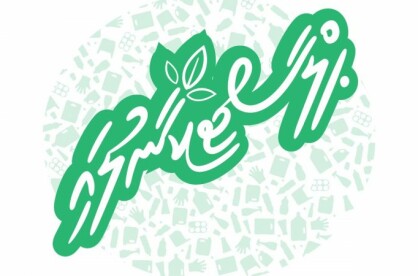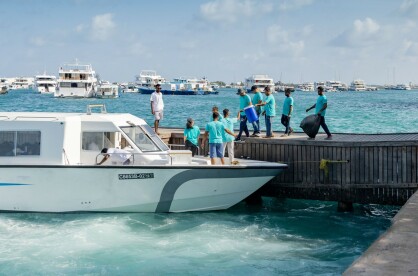Small
Island Developing States (SIDS) have different realities. The unique
characteristics such as their smaller size, geographic remoteness and
vulnerability to environmental threats pose particular challenges to their
development. Thus, geographically, demographically, and economically the
landscape for development in these nations are vastly different.
The
United Nations (UN) define SIDS as a distinct group of 38 UN Member States and
20 Non-UN Members/Associate Members of United Nations regional commissions that
face unique social, economic and environmental vulnerabilities. These nations
are located in three geographical regions: the Caribbean, the Pacific, and the
Atlantic, Indian Ocean and South China Sea (AIS). Among these nations is the
Maldives.
DEVELOPMENT
CHALLENGES
1. Smallness: in addition to being small, many SIDS are
made up of several small islands. Consequently, The United Nations Office for
Project Services (UNOPS) reports that these nations face restrictions in the
form of land mass. Yet, the population is densely dispersed. Smallness of nations result in smaller
domestic markets and low technical and institutional capacity. These nations
also face intense pressure from competing land uses for agriculture,
residential and infrastructure development, industrial production, tourism, and
waste disposal.
Subsequently, it is these features that result in a narrow
resource base, food insecurity, import dependence, a narrow range of exports
and a lack of economies of scale and competition. As the OECD in 2018 explained,
this characteristic of small and dispersed populations leads to high
transaction, transportation, and service delivery costs. This results in
weighing down the public sector.
2. Economic Challenges: SIDS are often
characterized as being economically vulnerable, highly susceptible to exogenous
shocks. Generally, due to lower capacity within a country, SIDS are more open
to trade, dependent on strategic imports such as energy, fuel, food, and
industrial supplies. Subsequently, these countries are often characterized with
narrowly based economies that depend on just a few products and sectors.
Maldives is a text book example of this economic vulnerability, from the
strategic dependency to the unhealthy over-reliance on the tourism industry.
Such dependence opens doors for vulnerable external economic conditions over
which there is little to no direct control. The COVID-19 pandemic has illustrated
the susceptibility of Maldivian economy to external shocks.
3. Remoteness: many SIDS are remote, typically located at
significant distances from other countries and major shipping routes and
networks. Due to this distance, SIDS experience poor connectivity of people and
freight, which impacts international trade, productivity and
innovation. Time delays and infrequency of shipping services also cause
uncertainties in trade. Additionally, distance and expensive means of
transportation constrain inter-island connectivity, deterring coordination and
leading to lost opportunities to build economies of scale. High transportation
costs also affect imports and exports, hindering SIDS’ access to international
markets and limiting their ability to become a significant part of the global
supply chain.
UNOPS also reports that a lack of diversification reduces SIDS’
competitiveness and ability, rendering them less attractive for foreign direct
investment. At the domestic level, these factors contribute to local producers
becoming monopolists that set uncompetitive prices to the disadvantage of the
SIDS populations. When it comes to infrastructure, higher transportation and
import costs can discourage its construction, operation and maintenance,
especially in remote areas.
4. Environmental and climate vulnerability: Natural
hazards represent the greatest challenge to SIDS’ drive towards sustainable
development. In fact, 90% of SIDS are located in tropical areas, where they are
at high risk of experiencing extreme weather events, which have a significant
impact on economies and the well-being of their populations. In
the case of Maldives, as with other island nations, now there is a blurred line
between the monsoons, with prolonged severe weather conditions. In such
analysis, OECD compares vulnerability with resilience of the nations. Vulnerability
here relates to the physical impacts of the hazard while the ability to manage
or adapt to that event/change is the resilience.
Many SIDS such as the Maldives
are vulnerable to sea-level rises and storms due to being low-lying,
particularly harmful given the dependency on sectors such as tourism and
fishing. Yet, there are many instances where economies have thrived in the face
of vulnerabilities as well. Most islands are rich in biodiversity, natural and
ocean resources which have been used to convert the challenges into
opportunities to create jobs and a shared prosperity for its peoples.
5. Human development lags: there is mixed
evidence on this. While some evidence indicates that human development
indicators in SIDS lag behind other developing countries, there are studies that
indicate otherwise. Yet, when compared with other groups of countries, the long-term
progress is relatively.
UNOPS reports that SIDS also have a smaller skilled
labour force that is further diminished by high brain-drain rates of 50 percent
on average and up to 75 percent in some cases. There are also gender gaps in
the workforce; This creates a barrier to the improvement of women’s
socio-economic conditions and promotes the feminization of poverty in some
islands
In
SIDS territories development is analyzed from the perspective of economic, social,
and environmental vulnerability affecting their growth prospects. Infrastructure
sectors, including transportation, energy, water, wastewater, solid waste,
digital communications and buildings, are essential services that underpin
SIDS’ ability to develop sustainably and achieve the Sustainable Development
Goals (SDGs).







